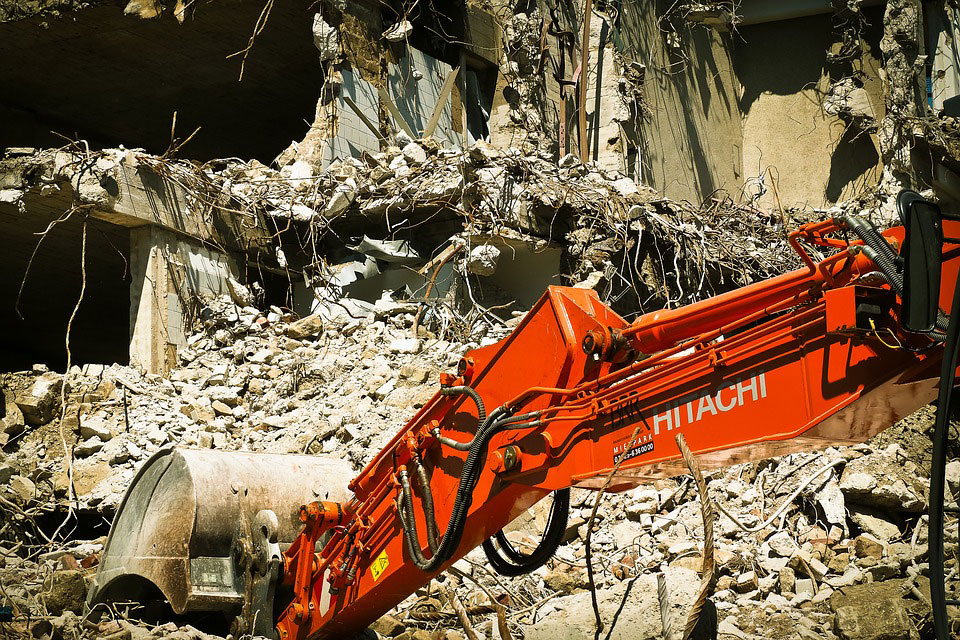Toronto Demolition FAQ, Answering All Your Questions About How We Do It

Demolition in Toronto involves a complex set of tasks and planning, tackling a structure’s dismantlement. In demolition, there are site clearance processes, salvage and recycling processes, recovery standards, and environmental remediation to consider. Highly sophisticated, there’s a lot of questions that can come up about demolition. Here’s some of the most common question we receive about what is demolition and how it works.
What is deconstruction?
Deconstruction is an environmentally friendly but labour-intensive demolition technique that maximizes what can be done with the materials created. Deconstruction is to collect recyclable materials, without causing harm. It usually requires extensive hand demolition and sorting to prepare a structure for an eco-friendly demolition like this.
Are explosives used every time?
No, explosives are only used when deemed appropriate to help implode a structure. For these projects, explosives factor in as a very minor part of the total demolition. To use explosives, a Toronto demolition expert must have in-depth knowledge of the nature of structure, site preparation, and clearance work.
Is demolition regulated?
Yes, demolition is one of the most heavily regulated construction industry sectors in Canada. Because they most commonly work with structures damaged by fire, weather, or a structural deficiency, demolition usually requires review and approval from local authorities. A contractor must also possess the knowledge to handle hazardous or toxic materials, and be aware of all relevant health and safety expectations.
What is involved in an interior demolition?
An interior demolition does not touch the overall structure of a building but simply tackles the demolishing of spatial elements. When a space is being prepared for an upgrade or re-use, demolition contractors are brought in to clear out a room. This can involve demolishing interior walls and ceilings, flooring, utility services, and selective structural elements.
How are a deconstruction and demolition different?
A demolition and deconstruction produce roughly the same recycling rate on average which equates to 90%. The difference is that deconstruction takes more time and is a more detailed process in terms of separating and procuring these materials. More equipment, technology, contractors, and time are oftentimes required for an effective deconstruction.
Can every demolition contractor help historic conservation?
The most experienced and knowledgeable of demolition services in Toronto can provide assistance in cases of historic preservation. Due to the GTA having many historic structures, it shouldn’t be trouble finding a contractor to help. That said, you always want to partner with a demolition team that you know can retain the integrity of a historic structure and that you are confident they understand how to save the elements that need to be saved.
What commodities do you have in a demolition?
A lot of the materials generated in demolition has a market value which indicates they aren’t waste. The following demolition materials can be recycled, salvaged, or reused – concrete and aggregate materials, metals such as steel or copper, insulating materials, ceiling tiles, flooring and carpets, wiring and conduits, plasterboard, wood, soils, roofing materials, and carpet.
Demolition involves many moving pieces. No two jobs are alike. In Toronto, contractors may encounter many unique requests as to how to demolish a property and what’s required. The demolition company you hire will determine a lot about the success of your project. Choose wisely. Choose Core Mini Bins for a team you can trust to the highest degree.


